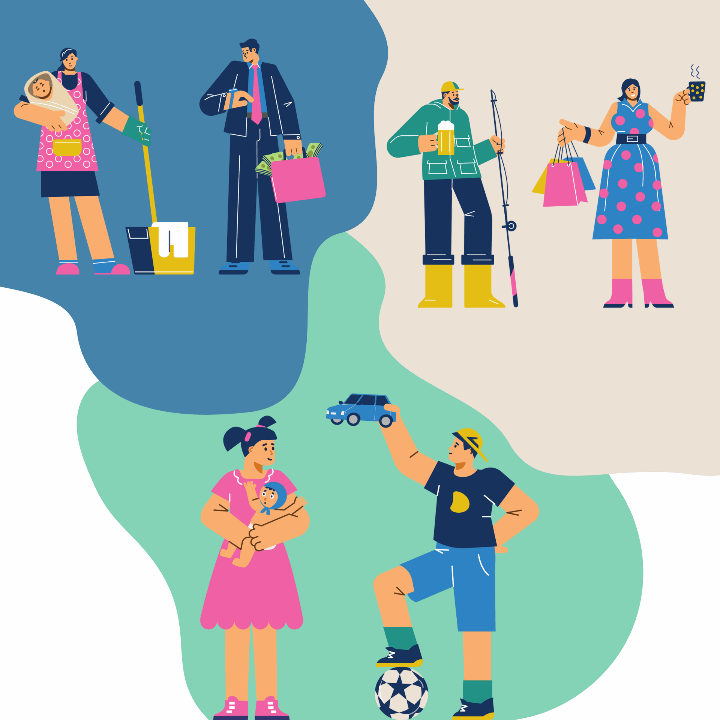What are gender stereotypes?
What are gender stereotypes?
Stereotypes and biases allow our brains to work faster
The stereotypes originate from biases, which are shortcuts that our brains rely on to process information. Biases are present in all areas of our lives, operate unconsciously and can be helpful when we need to quickly process large amounts of information, make sense of things, classify, and make decisions. Everyone has biases, but our biases can lead us to wrong conclusions. For example, in the image below, most will see curved lines, but they are actually straight. This misinterpretation highlights how our brain can trick us.

Gender stereotypes
Gender stereotypes can be seen as a specific form of bias, as they also imply a distortion in the processing of gender-based information and act unconsciously. Gender stereotypes categorize individuals according to their gender to simplify social understanding. Gender stereotypes manifest as widely held beliefs or generalizations about the characteristics, roles, and behaviors appropriate for men and women. These stereotypes are mainly viewed as environmental or cultural influences that can be internalized. Gender stereotypes shape individuals' self-concepts and personal preferences.Common gender stereotypes claim that:
- women are more emotional and sentimental than men.
- men are naturally better in mathematics and technology.
- women are better at housework and childcare.
- etc.

The consequences of gender stereotypes
Once occupations become gender-segregated, these labels are ingrained in popular imagination and absorbed at an early age. For example, "Draw-A-Scientist" studies reveal that young American children have assumed STEM workers are predominantly male for at least the past five decades. (Thébaud & Charles, 2018).
Gender stereotypes are frequent in STEM area and often discourage girls from pursuing them.
Gender stereotypes and biases can also lead to unfair judgments and actions, forming prejudice against individuals based on their gender. This prejudice, in its extreme, can manifest as discrimination, affecting opportunities and social interactions.
Merayo & Ayuso (2023) found that girls think they need special qualities to study STEM more than boys do. Girls also see themselves as less intelligent and brave, and they feel more anxious about math tests. Additionally, teachers often don't notice that girls have lower confidence in their STEM abilities (Ayuso et al. 2020).

How do gender stereotypes act?
Gender stereotypes act through multiple channels:
- Shaping girls’ own subjective and/or implicit self-views and self-concept about their ability and affinity for math and science.
- Shaping the ways parents, teachers, and peers provide affordances that, when accumulated across perceivers and over time, shape girls’ developing self-views.
- Girls and women anticipate gender stereotypes – stereotypes’ threat - that suggest a lower performance in STEM fields, thus limiting their interest in STEM challenges. They fear being evaluated through the lens of a negative stereotype.
- By means of gendered educational practices and learning environments.
- Shaping societal structures and institutions, thus extending beyond individual perceptions and social interactions.
Recognizing and challenging gender stereotypes in STEM education is essential to promote equal access and opportunities to STEM careers for both girls and boys.
There are no comments for now.
